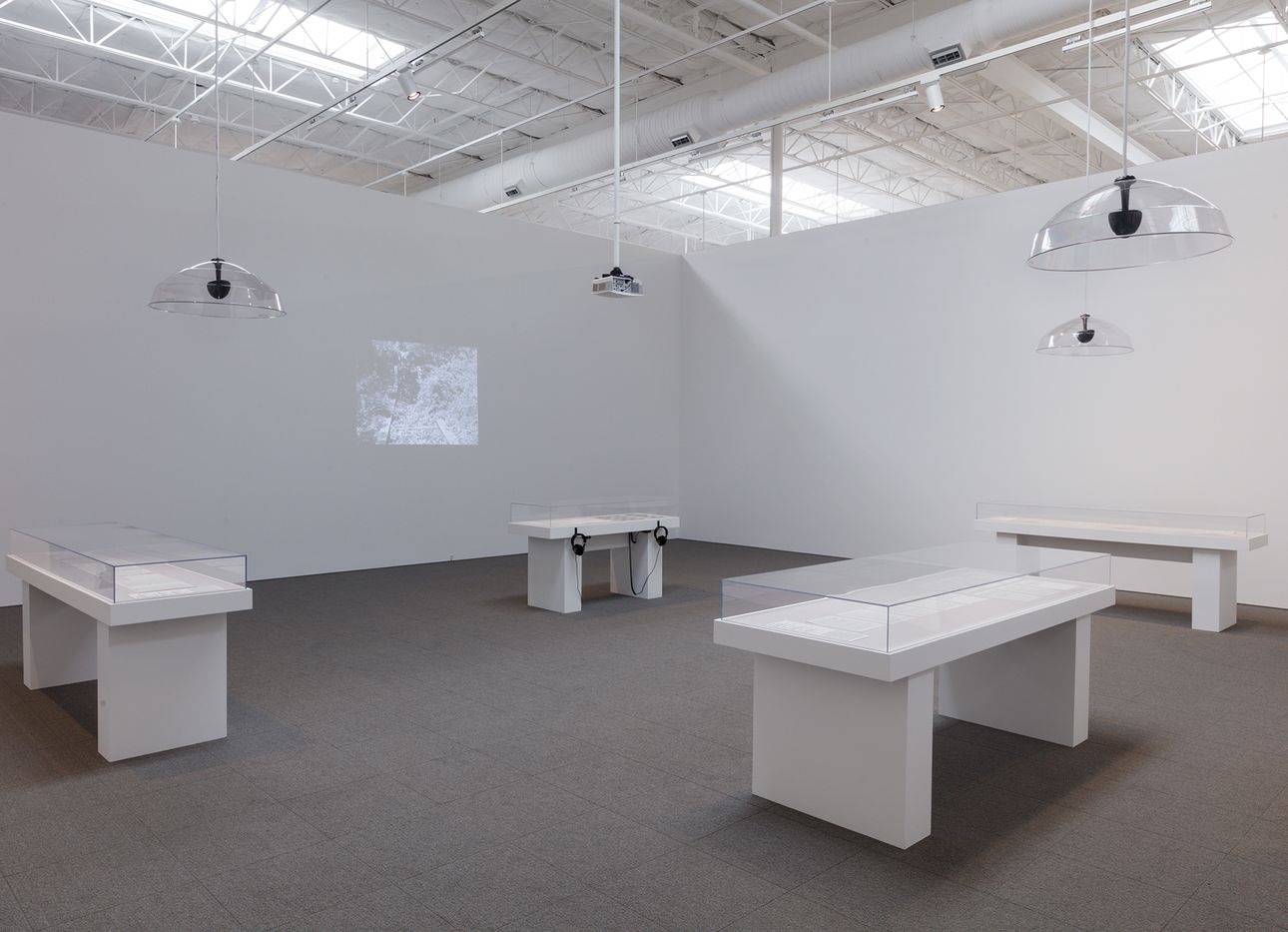
In Dallas, the First In-Depth Presentation of Nancy Holt’s Audio Works
Throughout the 20th century, sculpture-making bubbled with experimentation, as practitioners explored various mediums, theatricality, and physical engagement as means to create new interactions between objects and space. Some artists opted to use sound as a sculptural material—one that could envelop and enter into the body, and create a heightened awareness of one’s environment.
Land art movement pioneer Nancy Holt made several audioworks in the ’60s and ’70s, which have long been a lesser-known part of her practice. Now, a selection of them—alongside pieces by emerging and established artists including Laurie Anderson, John Cage, Bruce Nauman, and Haegue Yang—feature in an exhibition at The Warehouse Dallas called “Sound as Sculpture” (through May 28), a survey of how artists from the 1960s to today have used sound to create distinctive experiences of space and time. The show marks the first in-depth presentation of Holt’s work in sound. “As a female artist, Holt was overlooked again and again,” says Lisa Le Feuvre, executive director of Holt/Smithson Foundation, which loaned most of the Holt works to the art space.. “She wasn’t given a voice in the major experimental arts institutions of the time. In creating these audio works, she was inserting her voice into the discourse about art.”
This often takes place literally. Each of the Holt audio works in the exhibition features a recording of her voice, which describes her surroundings in real time. For “U.S. 80 Solo: Nebraska” (1976), Holt tape-recorded her observations as she drove through Nebraska as part of a cross-country road trip. In the recording, which viewers listen to on their car radios in The Warehouse’s parking lot, Holt notes county names, topographic features, and road signs, interspersed with her musings of how it feels to be continually propelled across space. In “Tour of the John Weber Gallery” (1972), viewers put on headphones to hear Holt guide them through the New York gallery the work is named for. She gives equal attention to the artwork as to seemingly mundane details about the interior—the color of the walls, the number of panes in a window, the finish of the elevator button, the surface of the wood floor.
Other highlights include “Visual Sound Zone (P.S.1)” (1977), a recording of the artist describing the specifics of a defunct bathroom in a building that would later become MoMA PS1. Initially conceived of as a site-specific installation to be played over a loudspeaker in the washroom itself, the piece is presented at The Warehouse exhibition using sound “showers”—hanging pendant hemispheres that listeners stand underneath. In “Stone Ruin Tour 1” (1967), the artist’s first audio work, Holt guides listeners around a dilapidated mansion in Cedar Grove, New Jersey. The audio is accompanied by photographs of the site, presented in a slideshow.
In her audio works, as with many of her pieces in other mediums, Holt reaches out to viewers, in whatever time and place they might be, creating an encounter that is both intimate and universal. “There’s something important about hearing an artist’s voice,” Le Feuvre says. “The moment you hear it is the moment you understand them differently. In Holt’s sound pieces, there’s this generous invitation to perceive with her, and it becomes an almost collaborative experience.”